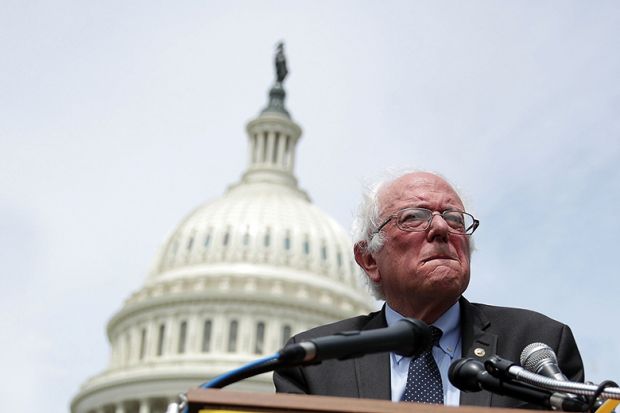At first glance, Heather Gautney’s new book on the Bernie Sanders campaign offers an insider’s view of a fascinating political run. Although a university professor, she served as a policy fellow in Sanders’ DC office and a volunteer researcher and organiser on his campaign.
However, this slim account offers little in the way of revelation or insight. Rather it is a political screed, relentlessly attacking Hillary Clinton with little reflection on the Sanders campaign’s own negatives and contradictions.
While this was the kind of election that had people on the left at each other’s throats, you would have no idea that leftists could reasonably disagree if your only guide were this book.
There is a strident and repeated point: class, not identity, is the most important issue; it was neoliberal Clinton’s failure to recognise this that defeated her and the country.
It has become an exhausted cliché in academia to bet everything from racism and sexism to consumerism and social media on the horse of neoliberalism. While a structural analysis has its strength, many have pointed out that class doesn’t simply trump race. In fact, a recent study of white voters in the 2016 election shows that it was not their economic insecurity but the perception that they were losing their white privilege that led them to vote for Trump.
There was a painful period in Sanders’ campaign when he was attacked by Black Lives Matter. Gautney deals briefly with this episode but leaves the impression that the problem was quickly resolved with some testimonials and a few position papers and op-ed pieces. The problem Sanders had with young black activists should have been given more space, but because the conflict doesn’t fit easily with the class versus race analysis, it wasn’t.
A general problem with Crashing the Party is that it moves on too quickly. You barely enter a particular state primary before you leave. Practically abandoning a chronological approach, the book reads like the op-eds Gautney wrote during the campaign.
Where she has something new to say is her description of being at the meetings when the Democratic Party put its platform together. With the strong showing of the left wing in the primaries, there was an effort to compromise with the mainstream Democrats. Gautney describes the tedious and frustrating process. While the left made some gains, the party machinery pretty much kept any radicalism out.
The future that she envisions is one filled with class activism against the oligarchs and neoliberalists. The book ends with a list of “to dos” for organising the working class. Unfortunately, events move more quickly than publishers, and the latest news is that Our Revolution, the organisation formed to keep the momentum going from the Sanders campaign, is in disarray.
Lennard Davis is distinguished professor of English at the University of Illinois at Chicago.
Crashing the Party: From the Bernie Sanders Campaign to a Progressive Movement
By Heather Gautney
Verso, 208pp, £9.99
ISBN 9781786634320
Published 1 May 2018
Register to continue
Why register?
- Registration is free and only takes a moment
- Once registered, you can read 3 articles a month
- Sign up for our newsletter
Subscribe
Or subscribe for unlimited access to:
- Unlimited access to news, views, insights & reviews
- Digital editions
- Digital access to THE’s university and college rankings analysis
Already registered or a current subscriber?






